
views
Performing Buddhist Prayers
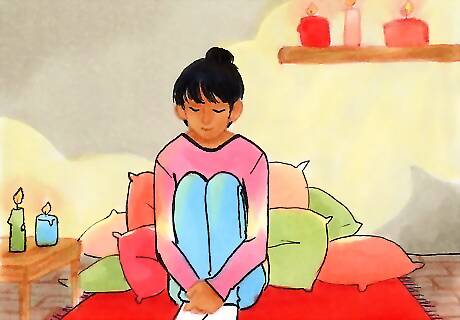
Center yourself with good posture, steady breathing and mindfulness. Before praying, take a deep breath, get comfortable, and close your eyes. Focus on the here and now, centering yourself however feels right. You want to sink into your prayers, not just say them. Candles, scents, and low lighting can help calm yourself down and bring yourself closer to your prayer.

Learn some basic mantras. Mantras are simply phrases meant to be repeated over and over again. You do not necessarily need to know their full meanings, as the words themselves, through repetition, lose their "meaning" and help you avoid distraction. Om mani padme hum: Pronounced ohm man-ee pad-mae hoom, this translates to "Hail to the jewel in the lotus." Oṃ Amideva Hrīḥ: Pronounced "OM Ami-dehva re." Or, in English, "To overcome all obstacles & hindrances" Om A Ra Pa Ca Na Dhih: This chant is believed to help with wisdom, critical thinking, and writing. Emphasise the "Dhih" (pronounced Di) when chanting. There are many, many other chants out there to practice, and listening to audio tracks is a great way to learn them quickly.

Try repeating or voicing a simple prayer for the Three Jewels. This prayer is good, short prayer that can be repeated as a mantra. Remember to focus on yourself and your own spiritual growth, not simply asking for it from Buddha:I take refuge in the Buddha, Dharma, and SanghaUntil I attain Enlightenment.By merit accumulations from practicing generosity and the other perfectionsMay I attain Enlightenment, for the benefit of all sentient beings. Sangha translates as "community, group, or assembly." It usually refers to the community of believers in Buddhist ideals. Dharma is the overall universal truth common to all people. It is the common force, of sorts, that binds and holds the universe together.
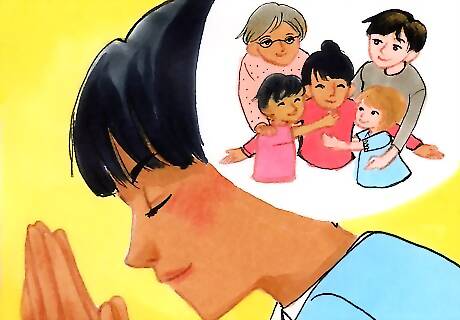
Pray for the happiness and wellbeing of your friends and family. This prayer is a great way to stay thankful for the people around you, and to recognize their connection. May I be well, happy, and peaceful.May my teachers be well, happy, and peaceful.May my parents be well, happy, and peaceful.May my relatives be well, happy, and peaceful.May my friends be well, happy, and peaceful.May the indifferent persons be well, happy, and peaceful.May the unfriendly persons be well, happy, and peaceful.May all meditators be well, happy, and peaceful.May all beings be well, happy, and peaceful.
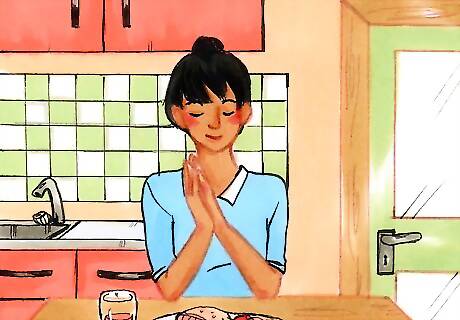
Perform simple thankfulness prayers before meals. Mealtime is a wonderful time to slow down and show gratitude for earthly blessings. Eating food is a time where you can become close to those around you and respect your physical nature. Try out the following mealtime prayers: May this food be dedicated to the triple jewelThe precious BuddhaThe precious DharmaThe precious SanghaBless this food so we may take it as medicineFree from attachment and desireSo that it may nourish our bodies so we mayWork for the benefit of all sentient beings.

Learn the Metta Prayer. The following prayer, adapted from a lecture by The Buddha, is an all-encompassing and powerful prayer to repeat to yourself: In order that I may be skilled in discerning what is good, in order that I may understand the path to peace,Let me be able, upright, and straightforward, of good speech, gentle, and free from pride;Let me be contented, easily satisfied, having few duties, living simply, of controlled senses, prudent, without pride and without attachment to nation, race, or other groups.Let me not do the slightest thing for which the wise might rebuke me. Instead let me think:“May all beings be well and safe, may they be at ease.Whatever living beings there may be, whether moving or standing still, without exception, whether large, great, middling, or small, whether tiny or substantial,Whether seen or unseen, whether living near or far,Born or unborn; may all beings be happy.Let none deceive or despise another anywhere. Let none wish harm to another, in anger or in hate.” Just as a mother would guard her child, her only child, with her own life, even so let me cultivate a boundless mind for all beings in the world.Let me cultivate a boundless love for all beings in the world, above, below, and across, unhindered, without ill will or enmity.Standing, walking, seated, or lying down, free from torpor, let me as far as possible fix my attention on this recollection. This, they say, is the divine life right here.
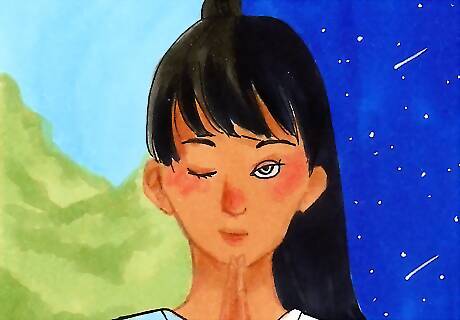
Remember that prayer is simply a way to connect to yourself spiritually. Buddha is not a creator god, though some practices do see him as divine. That said, prayer is not meant as an offering to Buddha. Rather, it is a way to deepen your own spirituality. If you feel like praying, then you should pray, and worry about the theology later. You can, of course, make up your own specific mantras, and think about your own ways to pray, as there is no wrong way to practice. There are a vast array of prayers, and no right way to pray as a Buddhist. This frees you to practice your prayer and spirituality how you desire it, not how you are told.
Using Tibetan Prayer Beads
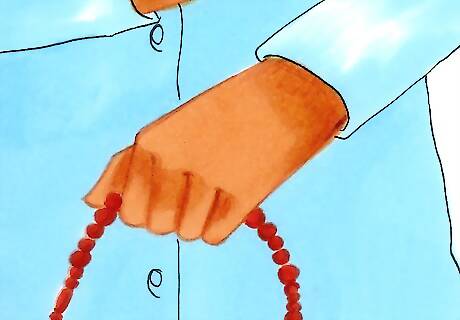
Use the beads to help count your prayers or mantras, not as a rigid amount of prayers you must say. The prayer beads, also known as Mala, are used to keep track of your prayers, not as some punishment or benchmark. They are a bit like rosaries, but know that they are there to help, not hinder, your spiritual practice. Counting the beads activates your body in the prayer, allowing you to work the body (beads), mind (prayer), and spirit (visualization) at once. You can use whatever prayers or mantras you desire with your beads. Prayer beads can be found online, or purchased at many Buddhist temples or Tibetan shops.
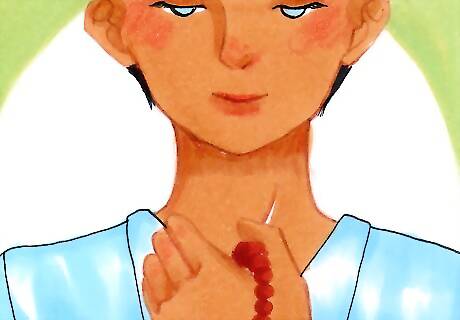
Understand the make-up of a mala. There are, usually 108 beads on a Tibetan Prayer Bead, plus one larger "head bead." Whenever you get around the mala, you're considered to have accomplished 100 prayers/mantras, with the other 8 used as spares in case you miscounted or missed a mantra. Some people believe the head bead has special significance, and it is sometimes called the "guru bead." This bead is your teacher, leading you through the prayer cycle.

Perform a prayer for each bead. Close your eyes and feel the first bead, often the head bead. Perform your prayer or mantra completely, then move up to the next bead, feeling your way up the mala. Some people use different mantras for the different sized beads, if you have them. You may use your right or left hand to count on. Don't worry about getting it all "perfect." Focus on visualizing your prayer as you say it, staying completely in the current moment. Ground yourself in the physical world by keeping your hands on your current bead.
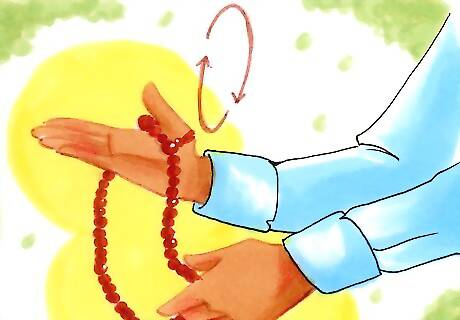
Do not skip over the guru bead once you've completed the first set. Once you've gone all the way around the beads, flip the chain over and keep going in the same direction you were already going. This is mostly symbolic, indicating that you would not "step-over" your teacher, guru, or head.

Store your mala in a clean, high place, or around you neck and hands. There is nothing wrong with wearing your mala, keeping it with you so that you can count your prayers anywhere. If you are not carrying it, hang it somewhere out of the way or on your alter, tucked away safely.



















Comments
0 comment